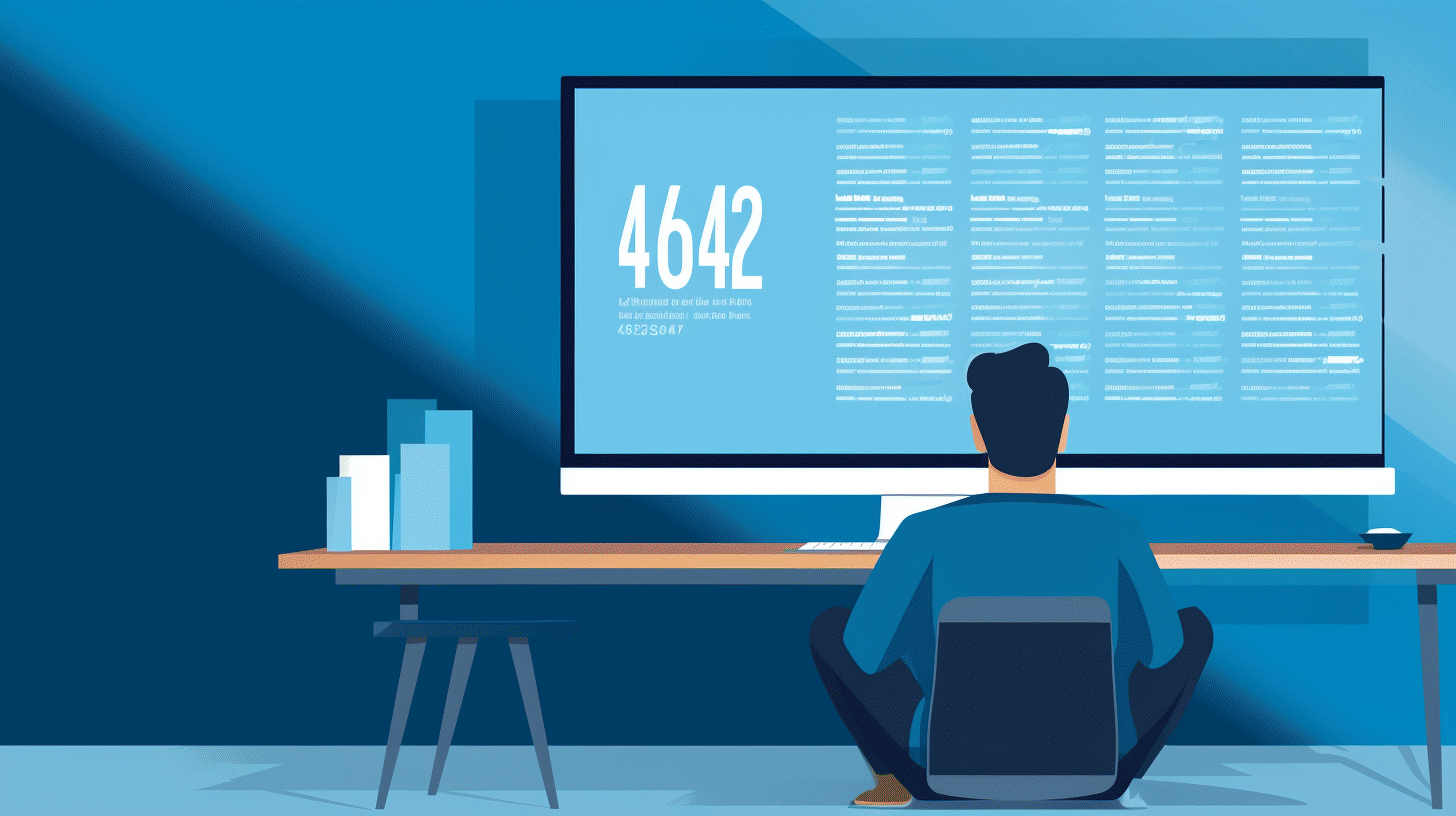WordPress 是一個非常流行的網站和部落格創建平台,但與任何軟體一樣,它也面臨著挑戰。從外掛衝突到載入速度緩慢,WordPress 用戶經常會遇到各種可能影響其網站效能和功能的問題。
在本文中,我們將探討 WordPress 用戶遇到的一些常見問題,並提供解決這些問題的實用解決方案。無論您是初學者還是經驗豐富的 WordPress 用戶,本指南都將幫助您解決最常見的挑戰並讓您的網站恢復並順利運行。
因此,無論您遇到外掛程式衝突、錯誤檔案、令人討厭的錯誤訊息還是緩慢的載入速度,我們都能為您提供協助。讓我們深入研究如何解決這些常見的 WordPress 問題!
但在開始之前,值得注意的是,雖然本指南提供了一般的故障排除技巧,但如果您不確定是否要對 WordPress 網站進行更改,最好定期備份您的網站並諮詢專業人士。安全第一!
準備好解決一些 WordPress 問題了嗎?我們走吧!
解決插件衝突
您是否曾在 WordPress 網站上遇到過似乎不知從何而來的錯誤或問題?您可能會絞盡腦汁,想知道是什麼原因導致了這些問題。這種意外行為背後的常見原因是插件衝突。當多個外掛程式無法很好地相互配合或與您的主題配合時,可能會導致各種問題,從功能問題到網站崩潰。但別擔心,有一個簡單的解決方案:停用所有插件。
停用外掛程式可以解決外掛程式之間或主題衝突所引起的錯誤。透過一次停用所有插件,您可以快速確定問題是否與插件有關或是否存在其他潛在問題。這是故障排除過程中的必要步驟,可為您節省大量時間和精力。
您可以透過以下方法停用 WordPress 網站上的所有外掛程式:
- 存取您的 WordPress 儀表板:使用您的管理員憑證登入您的 WordPress 網站。
- 導航至插件頁面:從左側選單中,按一下“插件”,然後選擇“已安裝的插件”。這將顯示您的網站上目前活躍的所有插件的清單。
- 選擇所有插件:在外掛程式清單的頂部,您會看到一個複選框。點擊它可以選擇您網站上的所有插件。
- 停用插件:選擇所有插件後,從插件清單上方的「批次操作」下拉式選單中選擇「停用」選項。
- 確認停用:將出現確認提示。按一下“應用”以停用所有選定的插件。
停用插件後,繼續檢查您遇到的問題是否已解決。如果是,那麼您就知道是您的一個或多個插件導致了衝突。現在,您可以開始逐一啟動它們以找出有問題的插件。
如果您不確定哪個外掛程式導致了問題,您可以聯絡外掛程式開發人員的支援團隊,諮詢 WordPress 論壇以獲取指導,或尋求 WordPress 專家的協助。
為了防止將來發生衝突並確保網站順利運行,保持外掛程式和主題為最新版本至關重要。開發人員經常發布更新來解決相容性問題並修復錯誤,因此定期更新外掛程式可以幫助防止衝突。
請記住,解決插件衝突需要耐心和系統化的方法。透過停用所有插件,然後小心地重新啟用它們,您可以找出問題的根本原因並確保無故障的 WordPress 體驗。
現在您知道如何正面解決外掛衝突,讓我們仔細看看一個特別受歡迎的 WordPress 快取外掛和最近修補的一個嚴重漏洞。 點這裡.
替換錯誤文件
你的 WordPress 網站故障了嗎?您是否遇到了錯誤或奇怪的行為,從而阻礙了網站的效能?請勿恐慌!有一個簡單的解決方案可以有效地解決這些問題:替換故障的檔案。無論您是從備份還原還是下載全新的 WordPress 副本,此過程都可以幫助您的網站恢復活力。
從備份中恢復
網站管理的最佳實踐之一是定期備份您的 WordPress 檔案和資料庫。這可確保如果出現任何問題,您可以依賴最新版本。當處理故障的檔案時,從備份中復原可以起到救命的作用。
以下是從備份還原 WordPress 網站的方法:
- 存取您的託管控制面板或文件管理器。
- 導覽至 WordPress 安裝的根目錄。
- 找到您想要還原的備份資料夾或特定備份檔案。
- 選擇備份檔案並選擇還原或覆蓋現有檔案的選項。
- 確認操作並等待過程完成。
從備份還原將用已知的工作版本替換任何故障的文件,從而有效地解決可能出現的任何問題。
新鮮的 WordPress 下載
如果您沒有最近的備份或懷疑問題出在 WordPress 核心檔案本身,則下載最新的 WordPress 副本可以幫助替換任何損壞或遺失的檔案。您可以按照以下方式操作:
- 造訪 WordPress 官方網站 (wordpress 論壇) 並下載最新版本的 WordPress。
- 將下載的 zip 檔案解壓縮到本機。
- 存取您的託管控制面板或文件管理器。
- 導覽至 WordPress 安裝的根目錄。
- 刪除目錄中的所有檔案和資料夾(不包括 wp-config.php 檔案和 wp-content 資料夾)以確保全新安裝。
- 將解壓縮的 WordPress zip 檔案中的檔案和資料夾上傳到您的伺服器,覆蓋先前的檔案。
- 上傳完成後,請造訪您的網站以啟動 WordPress 安裝過程。
- 請依照螢幕上的指示完成安裝。
下載最新的 WordPress 副本,您可以確保所有核心文件都是完整且最新的。這可以解決因文件損壞或遺失而導致的任何問題,並讓您的網站重新開始。
請記住,無論您是從備份還原還是下載全新的 WordPress 副本,此過程都可以有效地替換故障的檔案並使您的網站恢復正常。
解決常見的 WordPress 錯誤
無論您是經驗豐富的 WordPress 使用者還是新手,遇到錯誤都是管理 WordPress 網站不可避免的一部分。這些錯誤可能會令人沮喪並破壞您網站的功能。但不要害怕!透過一些故障排除技術,您可以快速診斷和解決常見的 WordPress 錯誤。
透過 FTP 禁用插件
WordPress 錯誤的常見原因是外掛衝突或故障。當遇到與插件相關的問題時, 透過 FTP 禁用插件 可以拯救生命。您可以按照以下方式操作:
- 透過 FileZilla 等 FTP 用戶端存取您網站的檔案。
- 導航至
可濕性粉劑內容資料夾並找到外掛目錄。 - 重新命名
外掛目錄類似plugins_inactive。此操作實際上會停用所有插件。 - 返回您的 WordPress 網站並檢查錯誤是否仍然存在。如果問題解決,您就可以識別有問題的插件。
- 重新命名
plugins_inactive回目錄外掛. - 現在,逐一重新命名每個插件的目錄
外掛資料夾_inactive直到最後。這實際上只是停用了指定的插件。 - 重新命名每個外掛程式後,刷新您的網站以識別導致錯誤的特定插件。
- 一旦您確定了有問題的插件,您可以更新它,聯絡插件開發人員尋求支持,或找到具有相同用途的替代插件。
請記住,透過 FTP 停用外掛程式可以幫助您隔離和解決由衝突的外掛程式引起的問題,從而讓您更好地控制 WordPress 網站的效能。
啟用錯誤日誌
啟用錯誤日誌 是另一種有用的故障排除技術,可以提供有關 WordPress 網站錯誤來源的重要資訊。若要啟用錯誤日誌,請依照下列步驟操作:
- 透過 FTP 存取您的網站的根目錄。
- 尋找
wp-config.php文件並將其下載到您的電腦。 - 打開
wp-config.php使用文字編輯器編輯文件。 - 尋找以下程式碼行:
定義('WP_DEBUG',false);. - 改變
錯誤的到真的以啟用調試。 - 儲存變更並上傳更新
wp-config.php文件返回到您的網站。 - 等待您的網站出現新的錯誤。
- 一旦發生錯誤,WordPress 會將其記錄在
偵錯日誌文件,您可以在可濕性粉劑內容目錄。
透過啟用錯誤日誌,您可以深入了解錯誤的性質並獲得有關錯誤原因的詳細資訊。這將幫助您有效地解決和排除問題。
檢查更新
保持 WordPress 安裝、主題和外掛程式為最新版本對於網站的順暢和安全至關重要。過時的軟體通常會導致相容性問題和錯誤。若要檢查更新並確保所有內容都是最新的,請按照以下簡單步驟操作:
- 登入您的 WordPress 管理區域。
- 導航至 儀表板 並點擊 更新.
- 此頁面將顯示 WordPress 核心、主題和外掛程式的所有可用更新。
- 點選 立即更新 按鈕啟動更新程序。
- 更新完成後,刷新您的網站並檢查錯誤是否仍然存在。
定期檢查更新並及時應用它們可以幫助防止錯誤並確保您的 WordPress 網站順利運行。
請記住,故障排除涉及以下步驟 透過 FTP 禁用插件, 啟用錯誤日誌, 和 檢查更新 在 WordPress 管理區域。透過遵循這些技術,您可以有效地診斷和解決常見的 WordPress 錯誤,確保您和您的網站訪客獲得無縫的體驗。
有關 Managed-WP 提供的支援範圍的更多信息,請訪問其 Managed-WP 的支援範圍 頁。
修復網站載入緩慢的問題
您的網站是否需要很長時間才能載入?載入時間緩慢可能會讓用戶感到沮喪,並且會對您網站的 SEO 和整體用戶體驗產生負面影響。幸運的是,您可以採取一些簡單的步驟來解決此問題並確保您的網站快速且有效率地載入。
清除瀏覽器快取
網站載入緩慢的一個常見原因是瀏覽器快取混亂。當您造訪網站時,瀏覽器會在其快取中儲存各種文件,包括圖像、腳本和樣式表。這使得瀏覽器在您下次造訪時能夠更快地載入網站。
然而,隨著時間的推移,快取可能會被過時或不必要的檔案堵塞,導致載入時間變慢。清除瀏覽器快取可以強制瀏覽器取得並下載這些檔案的最新版本,從而幫助加快網站速度。
若要清除瀏覽器緩存,請按照以下步驟操作:
- 鉻合金: 開啟 Chrome 選單,前往“更多工具”,然後選擇“清除瀏覽資料”。確保選取“已快取的圖像和檔案”,然後按一下“清除資料”。
- 火狐瀏覽器: 前往 Firefox 選單並選擇“選項”。在「隱私權和安全性」標籤中,向下捲動至「Cookie 和網站資料」部分,然後按一下「清除資料」。勾選「快取的 Web 內容」旁邊的方塊,然後按一下「清除」。
- Safari: 在 Safari 選單中,選擇「偏好設定」並前往「隱私權」標籤。點擊“管理網站資料”,然後點擊“全部刪除”。點擊“立即刪除”確認您的選擇。
透過清除瀏覽器緩存,您可以讓您的網站重新開始並可能提高其載入速度。
恢復最近的更改
載入時間緩慢的另一個潛在原因是最近對網站所做的更改,例如安裝或更新外掛程式、主題或腳本。這些變化有時會引發衝突或相容性問題,從而降低您的網站速度。
如果您最近對您的網站進行了更改並注意到加載速度明顯下降,那麼可能需要恢復這些更改以查看是否能解決問題。您可以按照以下方式操作:
- WordPress的: 如果您使用的是 WordPress 之類的 CMS,您可以訪問您網站的後端並導航到「外掛程式」或「主題」部分。尋找最近安裝或更新的外掛程式或主題並暫時停用/刪除它們。檢查每次更改後載入速度是否有所提高。
- 客製化網站: 如果您有一個客製化的網站,您可能需要諮詢您的網站開發人員或造訪您網站的程式碼庫來識別和恢復可能導致載入時間緩慢的最近的變更。
透過找出影響您網站效能的具體變化,您可以採取必要的步驟來解決問題並優化您網站的載入速度。
請記住,加載緩慢的問題可能有多種潛在原因,並且可能需要一些反覆試驗才能確定並解決根本原因。但是,透過清除瀏覽器快取並恢復最近的更改,您可以顯著提高網站的載入速度並提供更好的使用者體驗。
執行這些步驟可以優化您的網站的效能並確保您的訪客擁有快速、無縫的瀏覽體驗。 🚀
建立網站備份
定期備份是網站管理的關鍵步驟。它不僅有助於排除故障,而且還能在發生任何不可預見的事件時提供安全網。想像一下,您花費數小時創建和完善您的網站,但卻因技術故障或惡意攻擊而被摧毀。透過備份,您可以輕鬆撤銷操作或還原檔案的先前版本,讓您高枕無憂,並避免潛在的災難。
建立網站備份時需要牢記以下一些要點:
- 頻率: 建議根據您網站更新和內容變更的頻率制定定期備份計劃。如果您有一個經常更新的動態網站,則可能需要每日或每週備份。對於變化不頻繁的靜態網站,每月備份可能就足夠了。
- 備份類型: 根據您網站的複雜性和需求,您可以考慮幾種類型的備份:
- 完整備份: 這包括所有網站文件和資料庫,提供您網站在特定時間的完整快照。
- 增量備份: 這些備份僅捕獲自上次完整備份以來所做的更改,從而節省了磁碟空間並減少了備份時間。
- 異地備份: 將備份儲存在單獨的實體位置或基於雲端的儲存中可以增加一層額外的保護,確保即使在主要位置發生災難時資料也是安全的。
- 自動化: 手動建立備份可能非常耗時,而且容易出現人為錯誤。利用自動備份工具或外掛程式可以簡化流程,確保按照您選擇的時間表一致地建立備份。
- 確認: 定期驗證備份的完整性非常重要,以確保在需要時可以正確還原它們。備份只有在能夠發揮作用並能有效地恢復您的網站時才有價值。
- 測試: 除了驗證備份之外,建議還透過在測試環境中還原備份來定期測試復原過程。這將幫助您識別任何潛在問題並確保備份按預期工作。
- 保留備份: 保留多個版本的備份是一種很好的做法,這樣您就可以在需要時還原特定版本。如果您經常更改網站,這一點就尤其重要。
請記住,建立備份是一種主動措施,可以在發生資料遺失時節省大量時間、精力並避免潛在的麻煩。不要等到為時已晚才保護您的網站 - 今天就開始實施備份策略!
“有備份而不需要它總比需要備份而沒有備份要好。” – 未知
結論
總而言之,解決 WordPress 中的常見問題可能是一項艱鉅的任務,但只要掌握正確的知識和技術,您就可以輕鬆解決這些問題。透過停用外掛程式、替換故障的檔案以及採取措施解決常見錯誤,您將能夠保持 WordPress 網站順利運作。此外,透過清除瀏覽器快取和恢復最近的變更來優化網站速度可以大大改善使用者體驗。最後,不要忘記定期備份以保護您網站資料的重要性。請記住,如果您需要可靠且專業的 WordPress 託管平台,請考慮 Managed-WP.™。他們提供優質的託管 WordPress 雲端託管解決方案,可簡化基礎設施管理並提供全天候支援。
常見問題解答
- 為什麼我的 WordPress 網站很慢?
您的 WordPress 網站運行緩慢的原因有很多,包括伺服器負載高、圖片檔案大小過大、主題或外掛程式過時、或快取不足。為了提高速度,請考慮優化圖像、使用快取外掛程式、更新主題和外掛程式以及在必要時升級託管計劃。
- 如何修復 WordPress 中的「死機白屏」問題?
「死機白屏」可能會因為多種原因而出現,例如外掛衝突或 PHP 錯誤。要解決此問題,您可以嘗試透過 FTP 停用插件,啟用偵錯以識別錯誤,檢查主題相容性或從備份中還原。
- 為什麼我無法登入我的 WordPress 管理儀表板?
如果您無法登入 WordPress 管理儀表板,則可能是由於登入憑證不正確、資料庫問題或與安全性外掛衝突。若要解決此問題,請嘗試重設密碼、修復資料庫或暫時停用安全插件。
- 如何修復 WordPress 中的『建立資料庫連線錯誤』?
當連接到 WordPress 資料庫時出現問題時通常會出現「建立資料庫連線錯誤」的情況。若要解決此問題,請檢查資料庫登入憑證,修復資料庫表,並確保資料庫伺服器正常運作。
- 如果我的 WordPress 網站被駭客入侵,我該怎麼辦?
如果您的 WordPress 網站遭到駭客攻擊,請立即採取行動重新獲得控制權。更改所有密碼,使用安全插件掃描您的網站,刪除任何惡意程式碼,更新主題和插件,並考慮聘請專業人員來全面清理和保護您的網站。



















